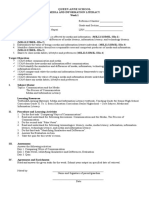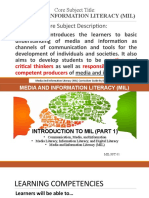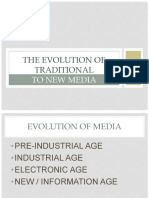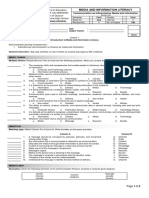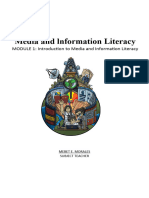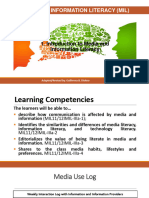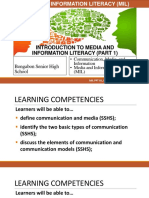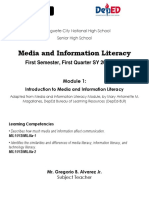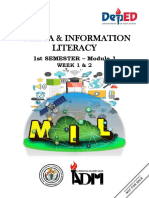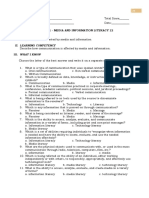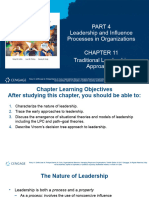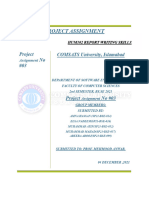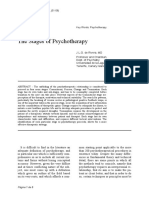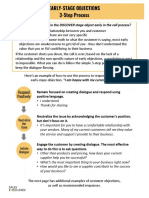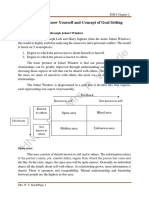0% found this document useful (0 votes)
10 views20 pagesMIL - Q1 Week 1
The document is a module for Grade 11-12 students on Media and Information Literacy, focusing on the importance of communication and its relationship with media. It covers types of communication, the elements of messages, and the impact of media on communication, both positive and negative. Additionally, it emphasizes the need for responsible media usage and the development of critical thinking skills among students.
Uploaded by
Olnahmae BagumbayanCopyright
© © All Rights Reserved
We take content rights seriously. If you suspect this is your content, claim it here.
Available Formats
Download as PDF, TXT or read online on Scribd
0% found this document useful (0 votes)
10 views20 pagesMIL - Q1 Week 1
The document is a module for Grade 11-12 students on Media and Information Literacy, focusing on the importance of communication and its relationship with media. It covers types of communication, the elements of messages, and the impact of media on communication, both positive and negative. Additionally, it emphasizes the need for responsible media usage and the development of critical thinking skills among students.
Uploaded by
Olnahmae BagumbayanCopyright
© © All Rights Reserved
We take content rights seriously. If you suspect this is your content, claim it here.
Available Formats
Download as PDF, TXT or read online on Scribd
/ 20
